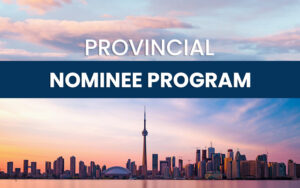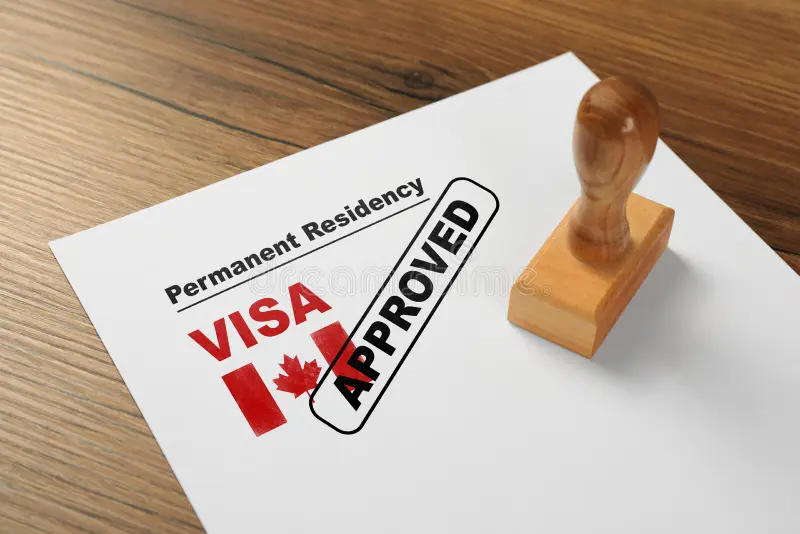Canada is a top destination for skilled workers and immigrants looking to build a future in a stable and prosperous country. The Canada Permanent Residence Visa offers a pathway for individuals to settle in Canada, providing them with various benefits such as access to healthcare, education, and the right to live and work in any part of the country. If you are considering immigration to Canada, understanding how to obtain a permanent residence visa and the options available under the Canada Provincial Nominee Program (PNP) is essential.
What is a Canada Permanent Residence Visa?
A Canada permanent residence visa grants individuals the right to live and work in Canada indefinitely. It is a step toward obtaining Canadian citizenship, though it is distinct from being a Canadian citizen. Permanent residents enjoy most of the same rights as citizens, including access to healthcare, social services, and legal protections, but they do not have the right to vote or run for political office.
Pathways to Canada Permanent Residence Visa
Canada offers several immigration pathways to obtain a permanent residence visa, each tailored to different types of immigrants, including skilled workers, entrepreneurs, and family members of Canadian citizens or permanent residents. Here are some of the most common options:
- Express Entry
The Express Entry system is one of the fastest and most popular routes for skilled workers seeking permanent residence in Canada. It manages applications for three federal immigration programs:
- Federal Skilled Worker Program (FSWP)
- Federal Skilled Trades Program (FSTP)
- Canadian Experience Class (CEC)
Candidates in the Express Entry pool are ranked based on the Comprehensive Ranking System (CRS) score, which considers factors like age, education, work experience, and language skills. Those with the highest scores receive an Invitation to Apply (ITA) for permanent residence.
- Canada Provincial Nominee Program (PNP)

The Canada Provincial Nominee Program is a key pathway for obtaining a Canada permanent residence visa. Through this program, provinces and territories can nominate individuals who wish to settle in a specific region. Each province has its own PNP with varying eligibility criteria based on local labor market needs.
The PNP allows provinces to address their economic and demographic needs by selecting candidates with the skills and experience required to fill gaps in the labor market. Some popular PNPs include:
- Ontario Immigrant Nominee Program (OINP)
- British Columbia Provincial Nominee Program (BC PNP)
- Alberta Immigrant Nominee Program (AINP)
- Saskatchewan Immigrant Nominee Program (SINP)
Provincial nominees may also receive additional points under the Express Entry system, boosting their CRS scores and improving their chances of receiving an ITA for permanent residence.
- Family Sponsorship
The Family Sponsorship Program allows Canadian citizens and permanent residents to sponsor close family members for permanent residency. Eligible family members include spouses, common-law partners, children, and, in some cases, parents and grandparents. This program is a vital option for reuniting families in Canada.
- Start-Up Visa
Entrepreneurs with innovative business ideas can apply for Canada’s Start-Up Visa Program. This program targets immigrants who can establish businesses in Canada, create jobs for Canadians, and compete on a global scale.
- Atlantic Immigration Program
The Atlantic Immigration Program is designed for skilled workers and international graduates who want to live in one of Canada’s Atlantic provinces (Newfoundland and Labrador, Prince Edward Island, Nova Scotia, or New Brunswick). It offers a fast-track route to permanent residence.
Canada Provincial Nominee Program (PNP): A Regional Focus
The Canada Provincial Nominee Program is an excellent option for those who wish to settle in a specific province or territory in Canada. Each province’s PNP targets different skills and sectors that align with its economic and workforce requirements. For example:
- Ontario focuses on tech and health care sectors.
- British Columbia prioritizes workers in the IT, business, and trades industries.
- Manitoba offers streams for skilled workers and international graduates.
PNP applicants may apply directly to a province or through Express Entry if they qualify for one of the federal programs.
Benefits of Applying Through PNP
- Enhanced CRS Score: If nominated by a province, applicants receive an additional 600 CRS points, virtually guaranteeing an ITA in the Express Entry system.
- Provincial Support: Applicants gain access to exclusive provincial support and opportunities tailored to their chosen province.
- Flexibility in Immigration: PNP programs are often more flexible than federal programs, making it easier to qualify if your skills match provincial needs.
Applying for Canada Permanent Residence Visa
To apply for a Canada permanent residence visa, you must first determine which immigration program best suits your qualifications and personal circumstances. You can apply through the Express Entry system or directly to a PNP, depending on your preferences.
Here are the general steps to apply:
- Check Eligibility: Ensure that you meet the eligibility requirements for your chosen immigration pathway (Express Entry, PNP, Family Sponsorship, etc.).
- Create an Online Profile: For Express Entry, create an online profile that outlines your qualifications. Your profile will be scored using the CRS.
- Receive an Invitation: If your CRS score is high enough or you receive a provincial nomination, you will receive an ITA for permanent residence.
- Submit Documents: After receiving an ITA, submit the required documents, such as proof of funds, medical exams, police certificates, and other supporting evidence.
- Receive Confirmation: Once your application is approved, you will receive Confirmation of Permanent Residence (COPR) and a permanent residence visa.
Conclusion
Obtaining a Canada permanent residence visa is a life-changing opportunity that opens the door to a future in one of the world’s most welcoming countries. With pathways like Express Entry and the Canada Provincial Nominee Program, immigrants have multiple avenues to secure their dream of living and working in Canada. By exploring these options and taking the right steps, you can make your move to Canada a reality.
Whether you aim to settle in a major city or a smaller, thriving community, Canada offers numerous opportunities for growth and success. Start your journey today by exploring the different pathways to permanent residence and finding the one that best suits your needs.


